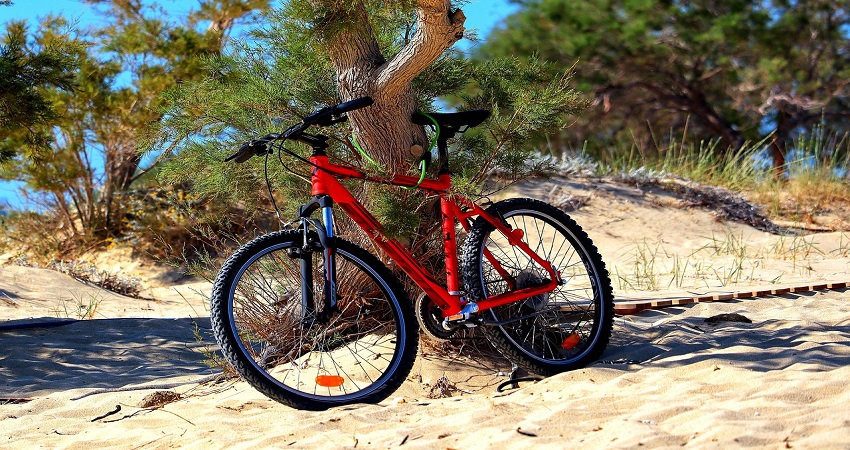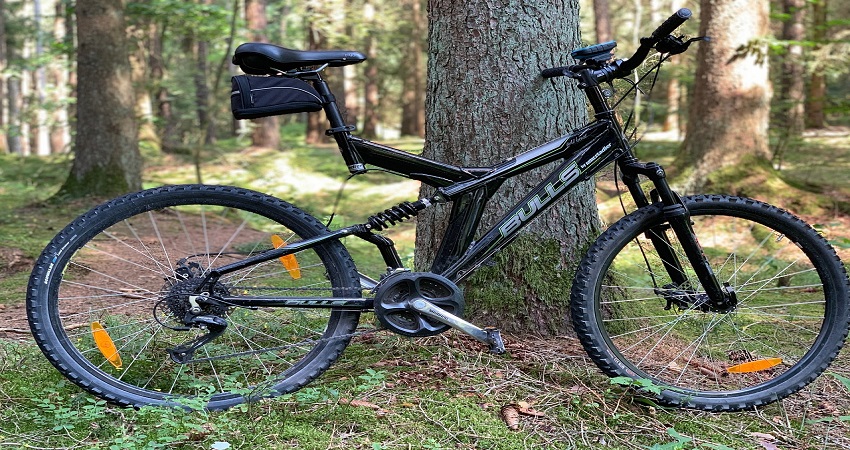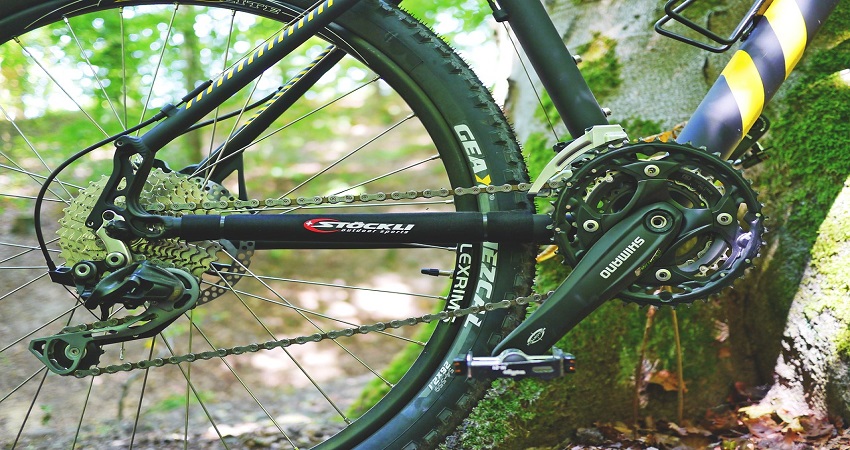Mountain bike stems are not universal; they vary in size and compatibility with different bike models. A mountain bike stem’s compatibility will depend on the bike’s steerer tube diameter and the handlebar’s clamp diameter.
The steerer tube diameter can either be 1 1/8″ standard or tapered, and the handlebar clamp diameter can be 31. 8mm or 35mm. Therefore, it is important to choose a mountain bike stem that matches the specifications of your bike to ensure a proper fit.
Types Of Mountain Bike Stems
Mountain bike stems are an integral part of your bike’s handlebars and play a crucial role in determining your overall riding experience. Understanding the different types of mountain bike stems available in the market can help you make an informed decision when upgrading or replacing your stem. In this article, we will discuss three main categories of mountain bike stems: threadless stems, quill stems, and adjustable stems.
Threadless Stems
Threadless stems have become the most widely used type of stem in the modern mountain biking industry. They are known for their lightweight, rigid design and easy installation. This type of stem connects to the bike’s steerer tube without the need for threads, hence the name. Threadless stems use stem caps, spacers, and clamp bolts to secure the handlebars in place.
If you’re looking to upgrade your mountain bike stem, a threadless stem can offer numerous benefits. With their simple design and compatibility with most modern bikes, threadless stems are generally easier to find and fit onto your bike than other stem types. They also allow for easy adjustment and precise control of handlebar height and reach, allowing you to fine-tune your bike’s fit to your preferences.
Quill Stems
In contrast to threadless stems, quill stems are a more traditional option commonly found on older mountain bikes. These stems utilize a quill that slides into the steerer tube of the fork and is then secured using a bolt. Quill stems are recognized for their adjustable height feature, which allows riders to position the handlebars higher or lower according to their preference.
If you own a vintage or classic mountain bike, chances are it is equipped with a quill stem. While they may not offer the same lightweight and sleek design as threadless stems, quill stems provide a certain charm and nostalgia. Additionally, they can be easier to adjust and require fewer tools compared to threadless stems, making them a suitable option for riders who prefer simplicity and customization.
Adjustable Stems
If you’re unsure about your ideal stem length or handlebar position, an adjustable stem might be the solution for you. Adjustable stems offer riders the ability to fine-tune their bike’s reach and handlebar height, providing increased comfort and control on the trail. These stems typically have an adjustable angle and can be lengthened or shortened to suit your riding style and preferences.
Adjustable stems are available in a variety of designs, and some even feature a quick-release mechanism for on-the-go adjustments. They are a versatile choice for riders who frequently switch between different terrains or prefer experimenting with their bike’s setup.
Whether you opt for a lightweight threadless stem, a classic quill stem, or an adjustable stem, it’s important to choose one that fits your bike’s specifications and matches your riding style. Taking the time to understand the different types of mountain bike stems available will help ensure a comfortable and enjoyable riding experience.
Factors To Consider When Choosing A Mountain Bike Stem
When choosing a mountain bike stem, it’s important to consider factors such as compatibility, length, and material to ensure a proper fit and optimal performance. Are mountain bike stems universal? Let’s explore the key factors to consider.
Factors to Consider When Choosing a Mountain Bike Stem Choosing the right mountain bike stem is crucial to ensure optimal performance and comfort during your rides. With the various options available in the market, it’s essential to consider specific factors that will help you make an informed decision. Here are some key factors to keep in mind when selecting a mountain bike stem. Fit The fit of the mountain bike stem plays a significant role in determining your riding experience.
An ill-fitting stem can lead to discomfort and affect your bike’s handling. When choosing a stem, it’s important to consider factors like your body proportions, riding style, and bike’s geometry. A stem that feels too long or short can have a direct impact on your reach and control over the bike. Taking the time to find the right fit is essential for optimal performance and comfort on the trails.
Length and Rise The length and rise of the mountain bike stem also play an important role in determining your riding position and bike’s handling characteristics. Stem length refers to the distance from the center of the handlebar clamp to the center of the steerer tube clamp. A longer stem provides a more aggressive and stretched-out riding position, ideal for downhill and more technical trails.
On the other hand, a shorter stem offers a more upright and relaxed riding position, suitable for cross-country trails. The stem rise, also known as the angle, determines the height of the handlebars. It’s important to find a combination of length and rise that suits your riding style and preference. Material Mountain bike stems are commonly made from aluminum or carbon fiber.
Each material has its own characteristics and benefits. Aluminum stems are known for their durability, affordability, and versatility, making them a popular choice among riders. Carbon fiber stems, on the other hand, offer a lightweight option that can help reduce overall bike weight. However, they tend to be more expensive and may not be as durable as aluminum stems. Considering your riding style, budget, and preference, you can choose the material that best suits your needs. Clamp Diameter The clamp diameter of the mountain bike stem is an essential factor to consider, as it must match the diameter of your handlebars.
Common clamp diameters include 31.8mm and 35mm. It’s crucial to ensure compatibility between the stem and handlebars to ensure a secure and safe connection. Measure your handlebar diameter and select a stem with a matching clamp diameter to avoid any compatibility issues. Steerer Tube Size The steerer tube size is another critical factor to consider when choosing a mountain bike stem. The steerer tube is the part of the fork that extends above the head tube and connects to the stem.
It’s important to ensure that the stem you choose is compatible with your bike’s steerer tube size. Common sizes include 1 1/8 inches and 1 1/2 inches. Check your bike’s specifications or consult a professional if you’re unsure about the steerer tube size of your bike.
Considering these factors when choosing a mountain bike stem will help you find the best fit and ensure optimal performance on the trails. Whether you’re a seasoned rider or new to the sport, selecting the right stem can enhance your comfort, control, and overall riding experience. Take the time to research, try different options, and consult experts to make an informed decision for your mountain bike setup.
Compatibility Of Mountain Bike Stems
The compatibility of mountain bike stems is an essential factor to consider when building or upgrading your bike. A stem is the component that connects the handlebars to the fork and plays a crucial role in determining your bike’s fit and handling characteristics. When it comes to compatibility, there are two main aspects to consider: compatibility with handlebars and compatibility with forks.
Compatibility With Handlebars
Mountain bike stems come in different sizes and shapes, and it’s important to ensure they are compatible with your handlebars. The two main factors to consider are the stem’s clamp diameter and the handlebar’s clamp diameter.
The clamp diameter refers to the width of the stem’s clamp area, where it connects with the handlebars. Common clamp diameters for mountain bike stems are 31.8mm and 35mm, although other sizes do exist. It is crucial to match the clamp diameter of the stem with the handlebar’s clamp diameter to ensure a secure and stable connection.
If you already have a handlebar that you want to use, make sure to check its clamp diameter. If you are purchasing a new handlebar, ensure that it matches the clamp diameter of your chosen stem. Mismatched clamp diameters can result in a loose connection and compromise your bike’s handling and safety.
Compatibility With Forks
In addition to handlebar compatibility, it’s also important to consider the compatibility of the mountain bike stem with your fork. The two key factors to consider in this aspect are the steerer tube diameter and the stem’s steerer tube diameter compatibility.
The steerer tube is the part of the fork that extends above the upper crown and attaches to the stem. It usually comes in two common diameters, 1-1/8 inches and 1.5 inches, although other sizes exist. It is crucial to ensure that the stem you choose matches the steerer tube diameter of your fork.
Some mountain bike stems come with shims or adapters that allow them to fit both 1-1/8 inch and 1.5-inch steerer tubes, providing versatility and compatibility with various forks. If your fork has a different steerer tube diameter, you might need to consider getting a new stem or using a compatible adapter.
It is worth noting that certain bike frames or forks might have specific compatibility requirements, such as tapered steerer tubes or proprietary stem sizes. In such cases, it’s essential to check the manufacturer’s specifications or consult a bike professional to ensure proper compatibility.
Frequently Asked Questions Of Are Mountain Bike Stems Universal?
Are Mountain Bike Stems Universal?
No, mountain bike stems are not universal. There are different types and sizes of stems available, which vary based on the bike’s design and intended use. It’s important to choose the right stem that fits your bike’s specifications and your riding style to ensure proper fit and performance.
Conclusion
To summarize, mountain bike stems are not universally compatible across all bikes. It is crucial to consider factors such as stem diameter, length, and the type of handlebars before making a purchase. By understanding your bike’s specific requirements and seeking professional advice if necessary, you can find the right stem that enhances your riding experience in terms of comfort, control, and performance.



